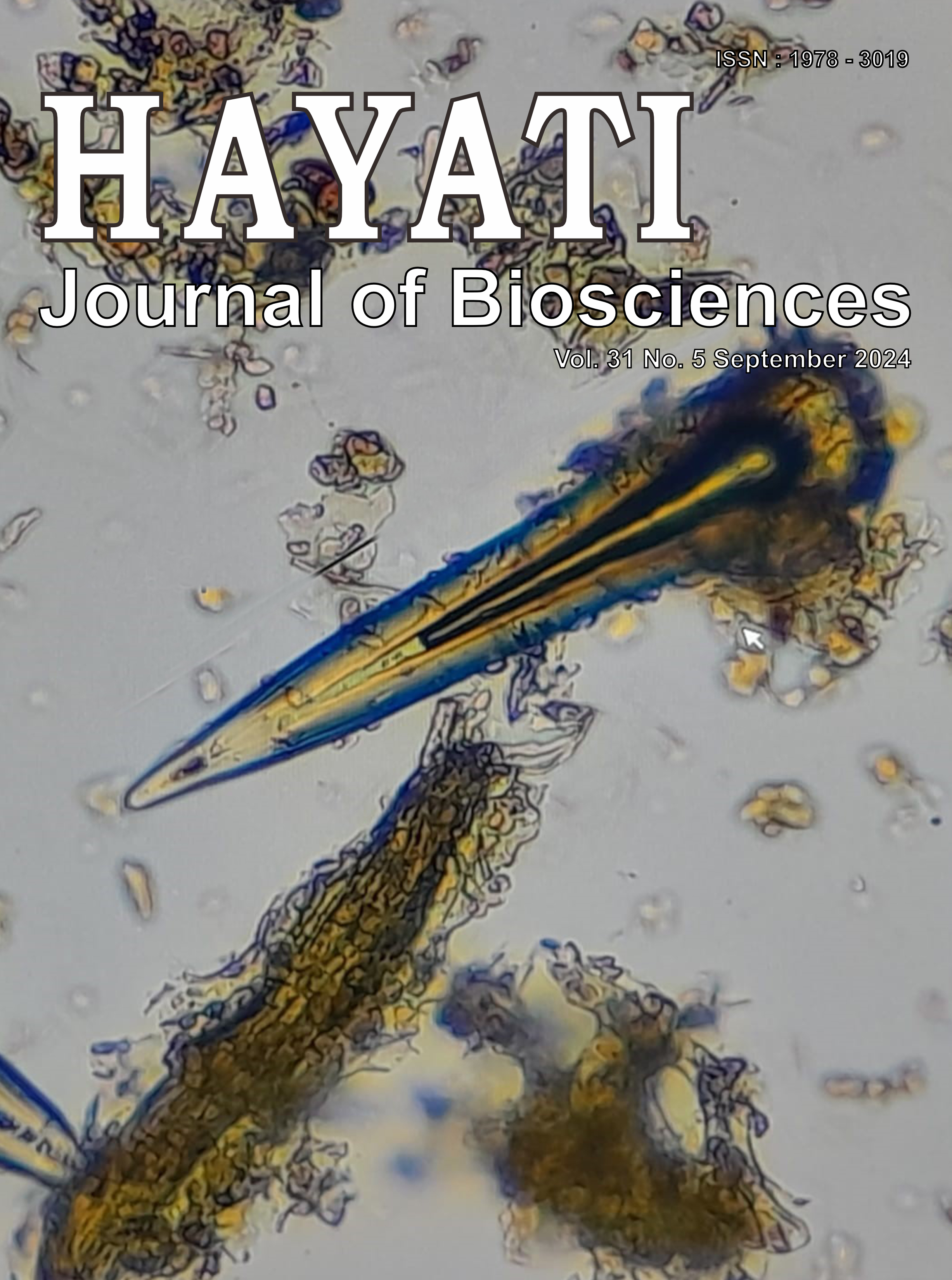Endoparasites of Wild Javan Gibbon (Hylobates moloch) At Gunung Halimun Salak National Park, Indonesia
Abstract
Infections of endoparasites in primates in natural habitats are highly prevalent and can cause disease, reduce health quality, and disrupt their life. This study investigated endoparasites prevalence value in the endangered Javan gibbon (Hylobates moloch) in Citalahab Forest, Gunung Halimun Salak National Park, Indonesia, from June to August 2022 by collected fecal samples (N = 10) and analyzed it using floatation methods. As a result, we found five genera of nematodes Trichuris trichiura (10% egg worm prevalence, Oesophagostomum spp. (50%), Trichostrongylus spp. (60%), Ancylostoma spp. (80%), and Strongyloides spp. (100%). The prevalence value of the worms in the larvae stage of Trichostrongylus spp. 20% and Strongyloides spp. 70%. Nematode infection status successively is Strongyloides spp., which is, frequently; Trichostrongylus spp. and Ancylostoma spp., which is, often; Oesophagostomum spp. and Trichuris trichiura which is, occasionally. Four species of nematode were found in both ages, and only Trichuris trichiura was found in one adolescent individual. The threat posed by this parasite deserves attention; further research is needed to fill the gap in our knowledge of their pathogenicity and transmission in Javan gibbon.
Downloads
Copyright (c) 2024 Rizka Malintan, Atin Supiyani, Rahayu Oktaviani, Yogi Prasetio

This work is licensed under a Creative Commons Attribution-NonCommercial 4.0 International License.
HAYATI J Biosci is an open access journal and the article's license is CC-BY-NC. This license lets others distribute, remix, tweak, and build upon author's work, as long as they credit the original creation. Authors retain copyright and grant the journal/publisher non exclusive publishing rights with the work simultaneously licensed under a https://creativecommons.org/

























.png) IPB University
IPB University Department of Biology
Department of Biology The Indonesian Biological Society
The Indonesian Biological Society 

